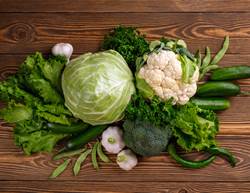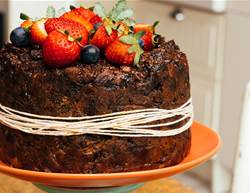Need a smoothie fix but would rather skip the excess sugar? These nutritionist-recommended ingredients should be your go-tos.
They pack tonnes of nutrition into a small transportable cup, and often, they taste more like a dessert than a healthy snack or meal, but smoothies aren’t without their faults. If you concoct or order the wrong blend, your refreshing drink can spike your blood sugar, leaving you queasy and feeling overall blah, rather than satisfied.
Unfortunately, I discovered this the hard way.
I’ve tried numerous times to hop on the smoothie bandwagon. They seem like the perfect post-workout snack when I can’t go home to eat, or an easy option when I need to have breakfast on the run. But no matter what I order, smoothies always seem to leave me feeling nauseous—like I’ve just taken a very bumpy ride in the back of a car while reading a book. (You know the feeling.) And being that I’m a full-time health editor, I was determined to find out what could be going on. So I turned to the pros:
According to dieititan Lori Zanini, even if a smoothie is overflowing with healthy foods, it can cause blood sugar levels to spike if it isn’t made with the right blend or ratios of ingredients. This, of course, leaves you feeling not-so-awesome. “When blood sugar levels rise and fall quickly, the body's metabolism may get interrupted which can lead to feelings of nausea,” Zanini says.
What’s more, the insulin that rushes to get excess sugar out of your blood and into your cells can cause a blood sugar crash. This can leave you feeling fatigued and hungry, explains dietitian Alissa Rumsey.
Those with diabetes will have different, but just as uncomfortable side effects. “If you have diabetes and spike your blood sugar with a smoothie, or any other food or drink for that matter, your cells may not be responding as well to insulin, so your sugar will stay elevated for a longer period," explains Rumsey. “This can cause headaches, fatigue, increased thirst, blurred vision, and make it challenging to concentrate.”
Portions matter
Whether or not you have diabetes, you’ll want to stick to a small, 250-300g smoothie to ward off blood sugar spikes. This size will pack about 700 to 1900 kJs, making it an ideal snack or small meal, says dietitian Angel Planells.
Prefer to order your smoothies and like to size up to save money? Divide the serving into a few smaller ones, advises Planells. When stored in an airtight container or mason jar, a smoothie can last for two or three days in the refrigerator. If stowed in the freezer, a leftover smoothie can last up to a week.
Strike the right balance
Just as a healthy snack or meal contains a mix of carbs, protein and fat, a well-constructed smoothie will contain the same elements. Striking this balance is essential to preventing unwanted blood sugar highs and lows, says Zanini. “While there is no ‘perfect’ ratio of ingredients, a good guideline would be to have a small serving of fruit, a tablespoon or two of healthy fat, a source of protein and a serving or two of vegetables.” (FYI: Zucchini, cauliflower, and spinach are basically undetectable in smoothies.)
In your own kitchen, hitting the right nutritional marks isn’t too challenging. However, if you prefer to get smoothies from a shop, you may have to ask the cashier to tweak an existing recipe or give them a custom order to stay on track.
Watch for boobie traps
It’s worth noting that even if you follow these guidelines to a tee, you can still get tripped up. “Many smoothies often contain added sugars from sweetened yogurts, sweetened non-dairy milk, or juice. Combined with the fresh fruit that’s typically in smoothies, this is far too much sugar,” says Rumsey. “Even though the sugar in fruit is natural sugar, if you’re drinking all that sugar at once without much protein or fat, it will cause a large blood sugar spike.”
“When ordering, don't be afraid to ask questions about what’s added to your smoothie to make sure you are making the most informed choice possible,” Zanini adds. Ask if the almond or soy milk is unsweetened and if the yogurt has added sugars. If the clerk isn’t sure, ask to see the containers.
And no matter where you get your smoothie fix—in your own kitchen or at a smoothie shop—try to stick to these nutritionist-recommended smoothie ingredients. When consumed in the correct amounts and with our recommended ingredient pairings, they’ll keep your blood sugar levels even-keeled, and those icky hungry/nauseous/headachy feelings at bay.
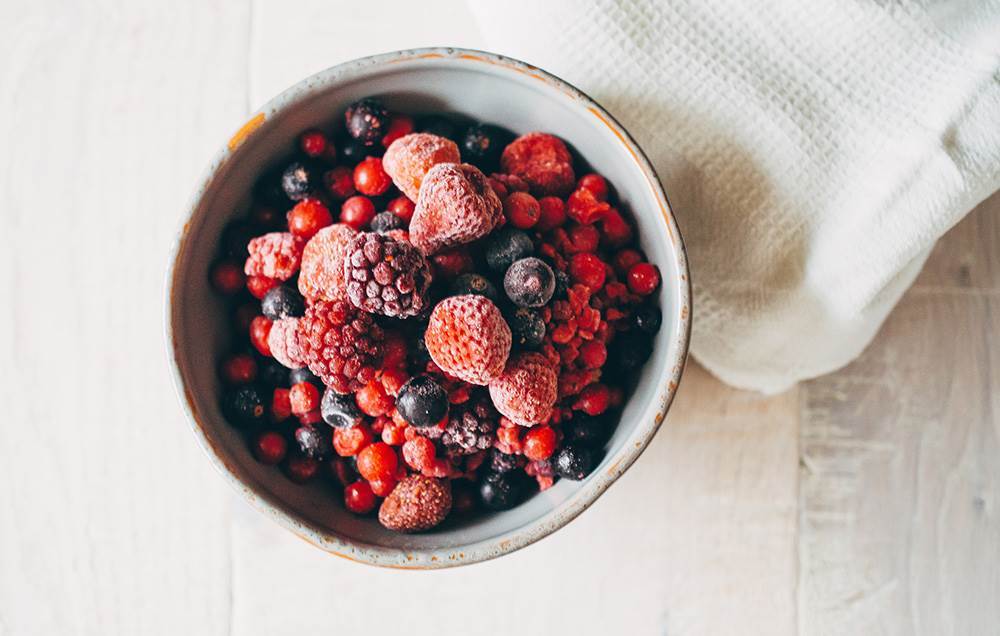


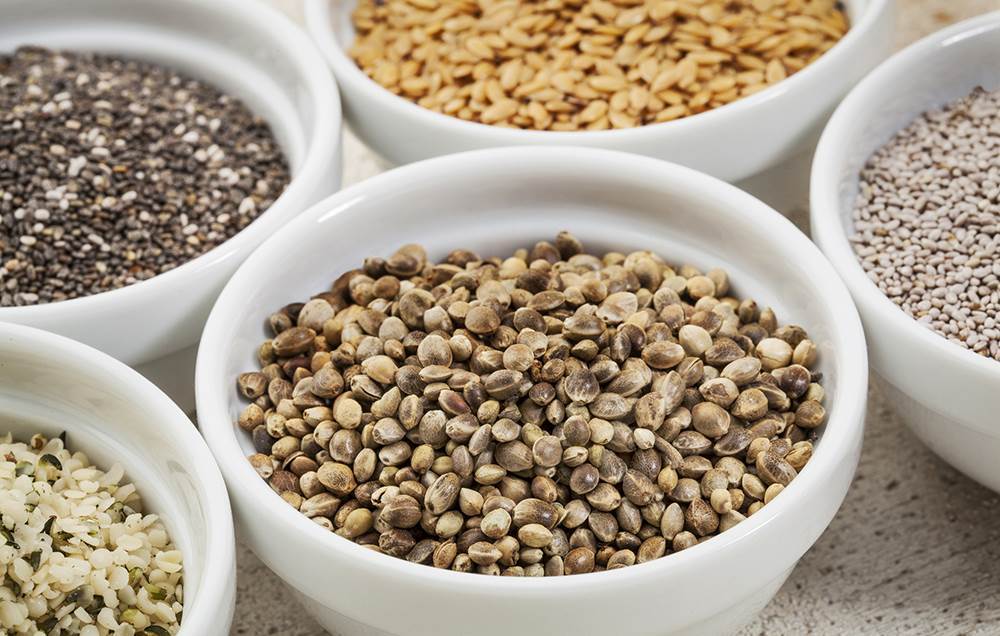
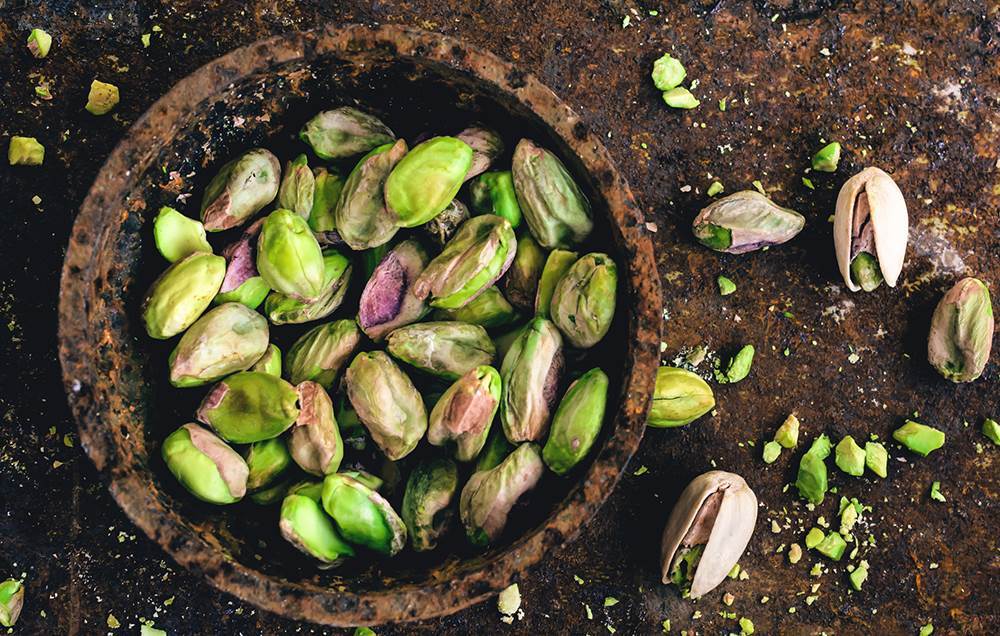
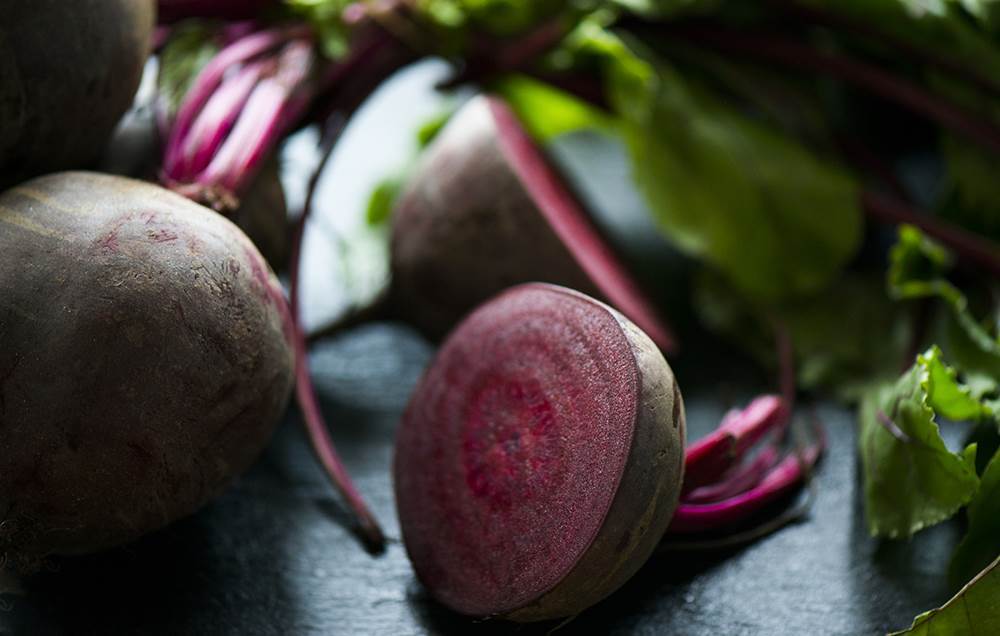
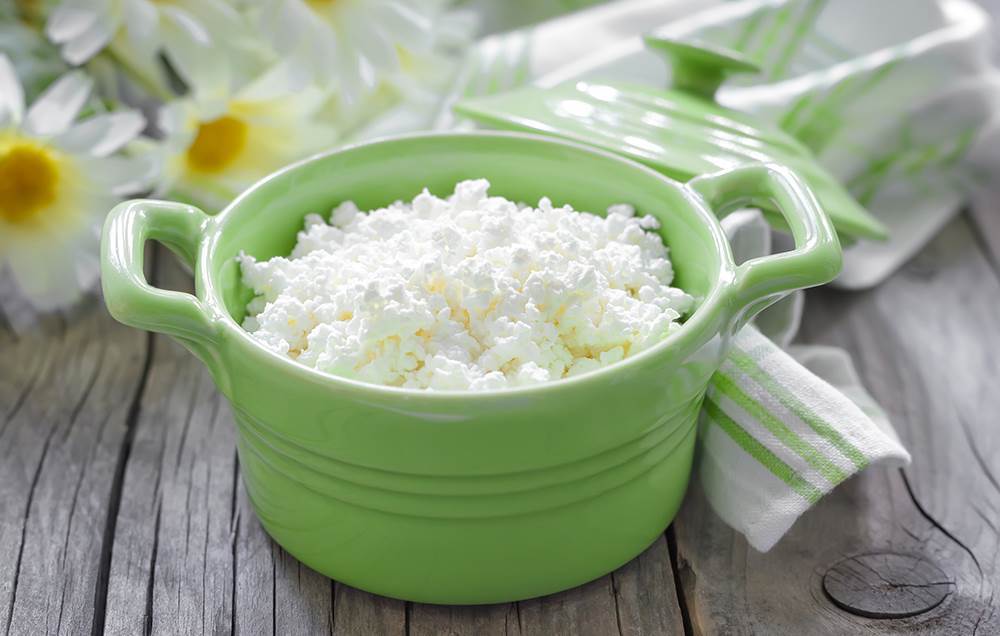
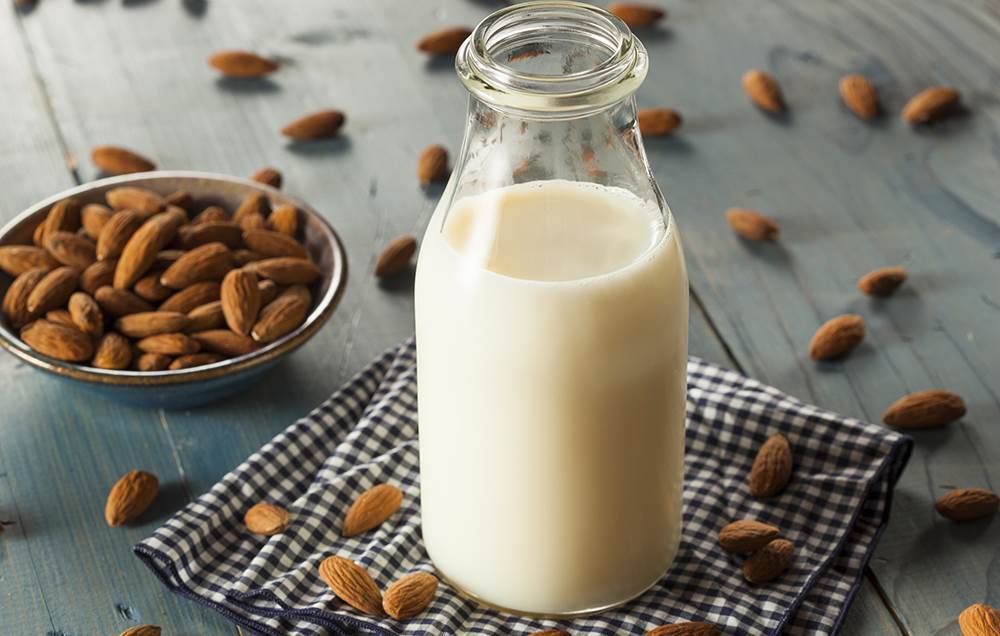
Berries
Not only are berries powerful inflammation fighters, but they also lend a pretty hue and loads of nutrition to smoothies. “Berries, including, blueberries, strawberries and raspberries, are fabulous smoothie ingredients because they’re high in fibre and vitamin C,” says dietitian Sarah Koszyk. “They’re also lower on the glycemic scale which means they won’t cause a spike in blood sugar—especially when paired with some protein and fat in a smoothie.”
The perfect blend: ¾ cup frozen berries, 2 cups fresh spinach, ½ cup unsweetened soy milk, 1 Tbsp. oats, 1 Tbsp. natural peanut butter
Pulses
“With their neutral flavour, chickpeas, and white beans are all great in smoothies. They can easily replace banana to help add some creaminess and bulk with less sugar,” says Rumsey. In addition to being low in sugar, their protein and high fibre content will help you stay fuller, longer, making any smoothie more of a meal than a snack. To ensure a healthy drink, look for unsalted, canned beans. Drain and rinse them before tossing them into your blender.
The perfect blend: ½ large frozen banana, 1 cup frozen cauliflower, ½ cup canned chickpeas (canned, drained, and rinsed), ½ cup unsweetened vanilla almond milk, 1 Tbsp. natural almond butter, ¼ tsp. cinnamon
Leafy greens
Don’t love eating your greens? You may prefer sipping them, instead. “Leafy green veggies like kale and spinach contain potassium and vitamin K while remaining very low in sugar,” says Zanini. “Better yet, they can easily blend into a smoothie without altering the flavour too much.”
The perfect blend: ¼ frozen banana, ¼ cup frozen mango, 2 cups fresh spinach, ½ cup unsweetened almond milk, 2 Tbsp. pumpkin seeds, ¼ scoop unsweetened vanilla protein powder)
Seeds
"Chia, flax and hemp seeds are good sources of omega-3s, as well as anti-inflammatory, unsaturated fats. Plus, just a tablespoon or two adds a few grams of fat, protein and fibre to your drink,” says Rumsey. “This helps the smoothie to digest more slowly and can help prevent blood sugar spikes. Pumpkin seeds and sunflower seeds are also great additions, as is tahini.”
The perfect blend: 1 cup frozen strawberries, ½ cup frozen cauliflower, ¾ cup unsweetened almond milk, 2 tsp. chia seeds, 2 tsp. hemp hearts, ½ cup of chickpeas (canned, drained, and rinsed)
Nuts and nut butter
“Nuts are another good source of unsaturated fats, protein and fibre. This combination of nutrients slows down digestion and causes sugar to be released more slowly into your bloodstream,” explains Rumsey. “This prevents sudden spikes in blood sugar and can keep your energy level more stable. Different nuts provide different vitamins and minerals, so experiment to see which ones you enjoy most. Almonds, walnuts and pistachios are all great in smoothies, as are nut and seed butters.”
The perfect blend: ½ frozen banana, ½ cup frozen zucchini, ⅔ cup cow’s milk, 3 Tbsp. shelled pistachios, 1 Tbsp. unsweetened coconut flakes
Beetroot
“Beetroot is great sources of digestion-slowing fibre, vitamin C and folate, a nutrient that plays a key role in heart health,” says Koszyk. “You can even use the beet greens—the stems that generally get thrown away—in smoothies to get an extra dose of antioxidants.” Before adding beets to your blender, they will need to be steamed and peeled. Alternatively, you can use prepackaged cooked beets.)
The perfect blend: ½ cup frozen spinach, 1 medium beet (steamed and peeled) ½ scoop unsweetened vanilla protein powder, 3 Tbsp. raw nuts, ½ tsp. fresh ground ginger, ½ cup unsweetened milk alternative, ½ tsp. vanilla extract
Plain Greek yogurt, cottage cheese or silken tofu
“Adding Greek yogurt or cottage cheese to your smoothie is a simple way to add 10 to 20 grams of protein to your cup,” says Rumsey. “Protein is key to slowing down digestion and helping you feel full and satiated. Add 125-200g of Greek yogurt or a half-cup of cottage cheese. People who follow a dairy-free diet can add silken tofu instead.”
The perfect blend: ½ cup Greek yogurt or silken tofu, ½ cup water, ¼ cucumber, 1 cup baby spinach, ½ pear, 1 kiwi, ¼ Tbsp. honey
Unsweetened milk alternatives
“Some good low carbohydrate liquid bases for smoothies include unsweetened almond or coconut milk which both contain just 1 gram of carbohydrates per cup. Unsweetened soy milk is another good option with just 3 grams per cup,” says Zanini. “Cow’s milk, on the other hand, has about 12 grams per cup.” That’s not to say you can’t use it, though. Just be sure to add less fruit to your blender than you normally would to keep the total sugars to a minimum and keep blood sugar spikes at bay.
The perfect blend: ¼ frozen large banana, ½ cup frozen zucchini, 1 Tbsp. almond butter, ¾ cup unsweetened coconut milk, ¾ scoop unsweetened chocolate protein powder





